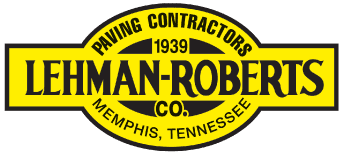By: Jeremy Ramberg, VP of Construction
In the hustle of our daily commutes and the rush to move from point A to point B, it’s easy to overlook the zones of transformation and danger that lace our pathways: the work zones. My journey from indifference to advocacy offers a personal testament to the profound shift in perspective we all need regarding these critical areas.
Before joining Lehman-Roberts in 2020, I, too, was guilty of breezing through work zones without a second thought for the people working within them. It’s a hard admission to make, but it’s a truth that underscores a broader societal issue: a lack of empathy and understanding for those who work tirelessly to build and maintain our infrastructure.
It got me thinking, why do we decelerate for school zones, adhering to every rule with heightened vigilance, yet disregard the similar, if not greater, risks present in work zones? The answer, though complex, seems to pivot on our selective engagement with immediate human elements and perceived vulnerabilities. School zones evoke a universal protective instinct—children represent vulnerability and future potential. Conversely, work zones often fail to elicit the same emotional response, despite the equally valuable lives at stake.
My transformation began with a simple, yet tremendous realization: the individuals in these work zones are more than mere silhouettes against the backdrop of progress; they are fathers, mothers, sons, daughters—each with a life as complex and valuable as any child’s. This epiphany was jarring. The thought of someone speeding past my loved ones, engrossed in their phone or otherwise distracted, is chilling. Yet, this is a daily reality for countless workers.
An experiment of sorts confirmed my suspicions: visibility and human connection dramatically alter driver behavior. Standing at the edge of a work zone, making eye contact, and acknowledging each passerby, I noticed a marked change in their speed and attention. This simple act of human recognition—seeing and being seen—can transform behavior. It’s a phenomenon well-documented in psychological studies, where even a picture of eyes can influence social behavior. Yet, how do we scale this effect to every work zone, every time?
The solution lies in a multifaceted approach. Awareness campaigns, like Work Zone Awareness Week honored each April, all play a crucial role, but they must be part of a larger, ongoing effort to educate and foster empathy. We must humanize the workers behind the cones and barriers, sharing their stories and highlighting their humanity. It’s about shifting from seeing work zones as obstacles to recognizing them as areas where our neighbors, friends, and family members are at their most vulnerable.
Consider this: Each year, the Federal Highway Administration reports that approximately 900 workers die each year in a work zone. Each number represents a life, a family, a story cut tragically short. These aren’t just statistics; they’re wake-up calls for us to drive with mindfulness and respect.
Since my awakening, I’ve made a conscious effort to slow down, be present, and ensure the safety of those around me in work zones. It’s a commitment that has, at times, made me the “slow one” on the road, but if that means saving lives, then it’s a title I wear with honor.
I challenge you, as I have challenged myself, to see work zones through a lens of empathy and responsibility. Let’s collectively commit to giving work zone workers the space, respect, and safety they deserve. Let this Work Zone Awareness Week be more than a mere reminder; let it be the catalyst for a lasting change in how we view and act in the spaces where our roads, and futures, are built.
Together, we can transform our roads from zones of danger to exemplars of community care and respect. Let’s not just drive to our destinations, but for the lives that make those journeys possible.










